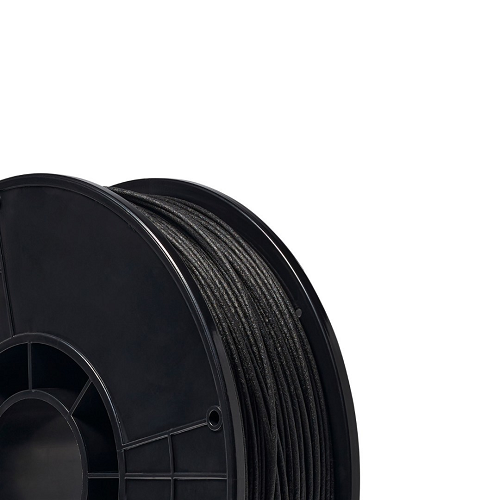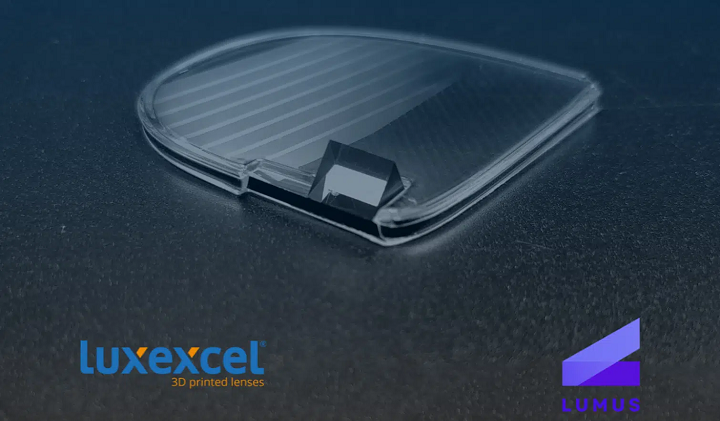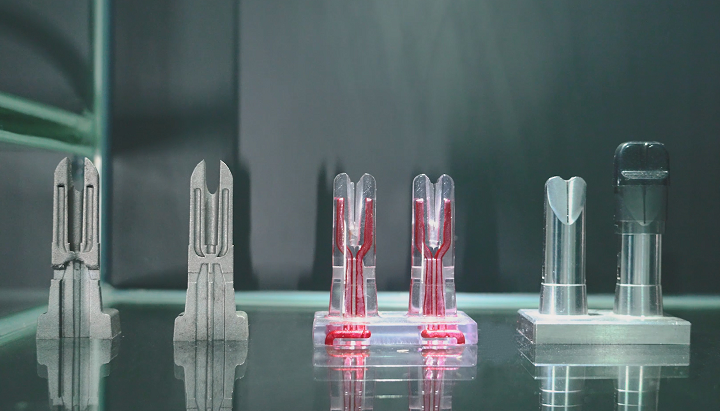We’re starting with some materials news in 3D Printing News Briefs, as Braskem has added to its filament range and ORNL has been studying a photovoltaic material. Moving on, Lumos and Luxexcel created a demonstrator of an augmented reality prescription lens solution, and DePuy Synthes has improved its ATTUNE Knee portfolio with 3D printing. Finally, Farsoon announced that its 3D printed interspinal fusion cages have received an important clearance, and that its technology has been used to increase productivity for vaping molds.
Braskem Introduces Two New 3D Printing Filaments
Industrial-scale biopolymer producer Braskem has added two new 3D printing filaments to its product portfolio, both of which can be used for multiple applications in industries like automotive, medical, and packaging. The first, glass fiber reinforced polypropylene, or FL500PP-GF, was designed for maximizing surface finish, printability, and dimensional stability, and the glass fiber makes the filament extra durable and strong. Available in black and 2.85 mm and 1.75 mm diameters, this material is good for lightweight and rigid part design, with low density and warpage and high chemical resistance. It minimizes bed adhesion issues and warpage, doesn’t require a heated chamber or drying, and is compatible with equipment like Creality and Ultimaker, with available print profiles on Ultimaker Cura Marketplace.
Braskem’s other new material, FL300PE, is a 100% polyethylene filament that works for solutions which normally require traditional HDPE resins. Just like with FL500PP-GF, this one is compatible with Creality and Ultimaker equipment, with print profiles available on Ultimaker Cura Marketplace. The material is lightweight and resistant to chemicals and moisture, with low density and warpage, high dimensional stability and bed adhesion, and available in white, with 1.75 mm and 2.85 mm diameters. It was designed to be easy to print, with great surface finish and no heated chamber or drying needed. PP filaments are often hard to print, due to shrinkage and warping, but Braskem says its FL300PE was designed specifically for AM applications. You can learn more about both materials at next month’s RAPID + TCT in Detroit, at Braskem’s booth #3813.
ORNL’s Multimodal Study on Photovoltaic Materials
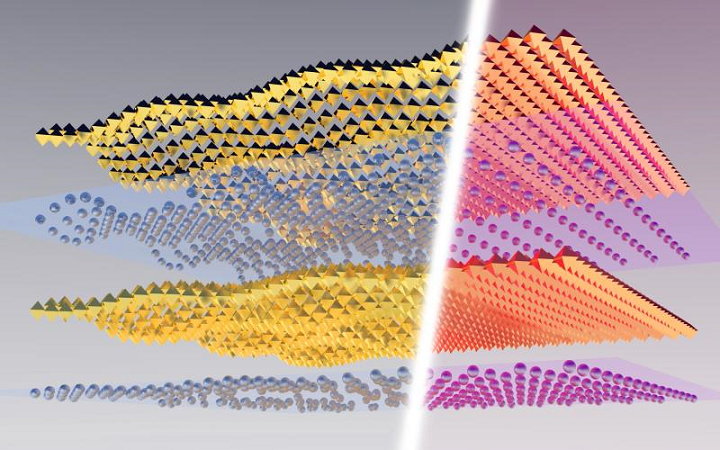
This image illustrates lattice distortion, strain, and ion distribution in metal halide perovskites, which can be induced by external stimuli such as light and heat. Credit: Stephen Jesse/ORNL
A team of researchers from Oak Ridge National Laboratory (ORNL) and the University of Tennessee, Knoxville published a study on a photovoltaic material that could be promising for the future of solar batteries. Metal halide perovskites have major potential for offering light-generated energy, which is known as photovoltaic conversion and is a big deal in the search for clean, reliable power sources. Using the equipment and knowledge of ORNL’s Center for Nanophase Materials Sciences (CNMS), the multimodal study looked at the structure of this family of crystalline metals to see how it interacts with phenomena like electric polarization and ions in motion to create this energy. The material is flexible, lightweight, and doesn’t cost a lot of money, which means it could potentially be turned into a malleable, thin film for 3D printing—if the durability and efficiency can be improved, that is.
“We can use 3D printing to create wearables, put them on top of cars and really democratize the use of perovskite solar cells. You could put them anywhere,” explained ORNL’s Olga Ovchinnikova, who oversaw experiments while a staff member at the CNMS and was the co-lead author of this study.
“A mass spectrometer doesn’t show us how the ions move. So we used a novel instrument that combines a mass spectrometer and scanning probe microscope in one system. We also developed an approach on this system that enabled us to see the ions move while the material interacts with light in real time and incorporated new methods of machine learning to process the acquired data and simulate these behaviors. These methods showed the behaviors we see are driven not by individual properties but by properties acting together.”
Reflective Waveguide in Prescription Lens Demonstrator
Together, 3D printed prescription lenses provider Luxexcel and Lumus, which creates reflective waveguide displays for Augmented Reality (AR), made an AR prescription lens solution demonstrator. It features a prescription lens with an embedded Lumus Maximus reflective waveguide, which has a 12 x 12 mm eyebox, 50° field-of-view, 2K x 2K resolution, and over 4,000nit/WLED brightness. This waveguide is good for outdoor use, and stays flat during the prescription lens 3D printing, which allows for clear, high-quality images that can be viewed through the demonstrator’s prescription lens; additionally, features like air gaps can be added during 3D printing. The technologies on display in this proof of concept can be scaled to 3D print smart eyewear with individualized prescriptions and thin, durable lenses.
“Lumus is one of the waveguide technology leaders in the industry and their reflective waveguide technology is known for its great image quality and brightness. Given 75% of the world population today requires vision correction, providing prescription lenses for augmented reality glasses is crucial,” said Guido Groet, Chief Strategy Officer at Luxexcel. “We’re proud of the contribution our partnership with Lumus is making to the smart eyewear industry where they provide the imaging technology, we add the prescription and make the full device thin, lightweight, and above all, fashionable.”
Two New Elements Added to ATTUNE Knee Portfolio
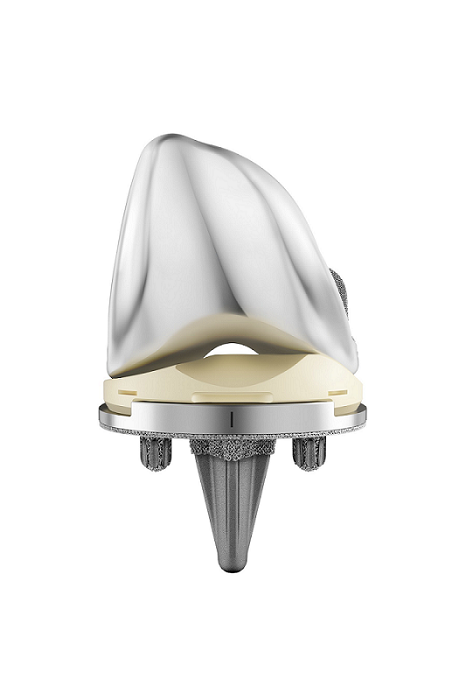
The ATTUNE™ Cementless Fixed Bearing Knee Construct with the AFFIXIUM™ 3DP Technology and ATTUNE™ Medial Stabilized Knee System
Johnson & Johnson MedTech announced that its orthopaedics company DePuy Synthes has added both the ATTUNE Cementless Fixed Bearing Knee with AFFIXIUM 3DP Technology, and the ATTUNE Medial Stabilized Knee System, to its ATTUNE Knee portfolio in order to offer more natural knee function to Total Knee Arthroplasty (TKA) patients. The first is a 3D printed cementless knee designed for more active patients whose lifestyles benefit from biological fixation. The advanced 3D printing technology creates a lattice structure with a porosity akin to natural bone, which can improve the initial stability of the implant. The ATTUNE Medial Stabilized Knee System uses a TruARC Lateral Path for natural knee function and asymmetric anatomic inserts with a raised medial lip for stability. Both innovations, with improved kinematic features, work with the VELYS Robotic-Assisted Solution.
“Through our DePuy Synthes Knee Solutions, we’re revolutionizing the traditional approach to total knee arthroplasty by offering patients a tailored surgical experience based on the combination of our kinematically advanced implants, our differentiated digital technology, and patient-specific techniques. We believe that this combination can lead to knee restoration and with it, we envision a future of better outcomes and improved patient satisfaction,” explained Medical Device Business Services, Inc. employee Juston Gates, the Worldwide Vice President of Knee Reconstruction for DePuy Synthes.
Farsoon 3D Printing Interspinal Fusion Cages & Vaping Molds

NMPA-approved Porous Titanium Interspinal Fusion Cages 3D printed by Farsoon metal 3D printers. Image courtesy of Huaxiang Group.
Finally, Farsoon‘s 3D printing technology was recently used for two interesting but different applications. First, medical 3D printing solutions provider Huaxiang Group announced that its Porous Titanium Interspinal Fusion Cages, 3D printed on Farsoon’s metal systems, had received category 3 medical device clearance from China’s National Medical Products Administration (NMPA). The patented cage can be customized for specific patients, including features such as elastic modulus, pore size, and porosity, in order to promote bone growth. The Porous Titanium Interspinal Fusion cage’s mechanical properties, size accuracy, and surface quality meet the top standards for interspinal implants.
In a case study, Farsoon detailed how Borton Precision Technology Co., Ltd. used its FS273M dual-laser metal system to print more sophisticated molds for electronic vaping devices, which have a complex internal structure. The printer was specifically used to fabricate next-generation vaping mold inserts featuring conformal cooling channels with a smoother internal surface area, which allowed Borton to achieve a faster, more uniform heat removal process, thus increasing its production efficiency by 60%. Because the production process uses CNC machining as well as metal AM, Farsoon also worked with Borton to create an automatic alignment solution for hybrid printing, complete with an optimized visual analysis layout and high-resolution, in-chamber cameras.
Subscribe to Our Email Newsletter
Stay up-to-date on all the latest news from the 3D printing industry and receive information and offers from third party vendors.
You May Also Like
US Army Corps of Engineers Taps Lincoln Electric & Eaton for Largest 3D Printed US Civil Works Part
The Soo Locks sit on the US-Canadian border, enabling maritime travel between Lake Superior and Lake Huron, from which ships can reach the rest of the Great Lakes. Crafts carrying...
Construction 3D Printing CEO Reflects on Being Female in Construction
Natalie Wadley, CEO of ChangeMaker3D, could hear the words of her daughter sitting next to her resounding in her head. “Mum, MUM, you’ve won!” Wadley had just won the prestigious...
Blue Laser-powered M600 3D Printer Launched by Meltio
Founded in 2019 as a joint venture between Additec and Sicnova, metal 3D printer OEM Meltio develops and manufactures high-performance and easy-to-use metal 3D printing solutions that use its patented wire-laser metal...
3D Printed Storage Tanks Cut Material Costs by 25%
In a previous article, “Concrete Dreams: Let’s Print Money, Not Houses,” we discussed how the spotlight on 3D printing homes might be misplaced. Bollards, pedestrian bridges, and concrete tanks could...


